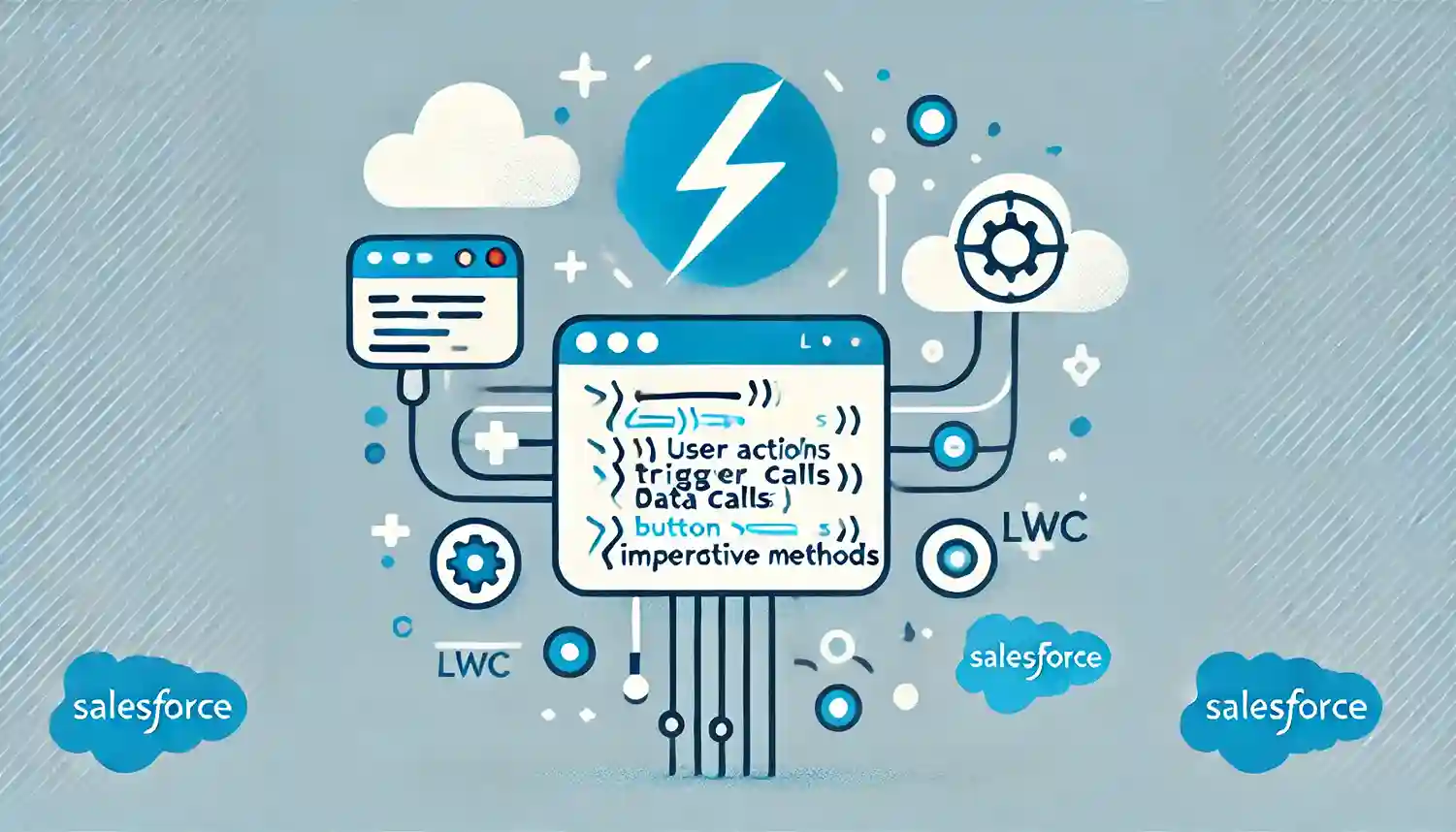Learn when to use imperative methods in Salesforce Lightning Web Components (LWC), offering control over data fetching. Includes Apex code examples
Table of Contents
What are Imperative Methods?
Imperative methods allow you to call Apex methods directly from your JavaScript code. Unlike @wire, which automatically fetches data when certain conditions are met, imperative methods let you decide exactly when and how data should be retrieved. This gives you more flexibility, especially in situations where you need to trigger data calls based on user actions, such as form submissions or button clicks
When to Use Imperative Methods
1. When You Need to Control Data Loading
Imperative methods are useful when you need full control over when the data is loaded. For example, if you want data to load only when the user clicks a button, an imperative method gives you the power to fetch data on-demand, rather than automatically.
Here’s an example of an LWC component that fetches contact details when a button is clicked:
import { LightningElement } from 'lwc';
import getContact from '@salesforce/apex/ContactController.getContact';
export default class ContactDetails extends LightningElement {
contact;
handleClick() {
getContact({ contactId: '003XXXXXXXXXXXXXXX' })
.then(result => {
this.contact = result;
})
.catch(error => {
console.error('Error:', error);
});
}
}In this example, data is retrieved only when the button is clicked, giving you full control over the timing of the data load.
Apex Code for Contact Details
public with sharing class ContactController {
@AuraEnabled
public static Contact getContact(Id contactId) {
try {
return [SELECT Id, Name, Email FROM Contact WHERE Id = :contactId LIMIT 1];
} catch (Exception e) {
throw new AuraHandledException('Unable to fetch contact details');
}
}
}This Apex method returns a contact’s details by querying the Contact object. It uses the provided contactId to fetch the Id, Name, and Email fields.
2. When Data Depends on User Input
Imperative methods are perfect when your data depends on what the user enters into a form or search field. For instance, you can trigger a data fetch after the user submits a search term. This way, you’re not fetching unnecessary data until the user interacts with your component.
Here’s an example of an LWC component that searches for contacts based on user input:
import { LightningElement } from 'lwc';
import searchContacts from '@salesforce/apex/ContactController.searchContacts';
export default class ContactSearch extends LightningElement {
searchResults;
handleSearch(event) {
const searchTerm = event.target.value;
searchContacts({ searchTerm })
.then(result => {
this.searchResults = result;
})
.catch(error => {
console.error('Error:', error);
});
}
}In this case, data is fetched based on user input, giving you full control over when the data call occurs.
Apex Code for Searching Contacts
public with sharing class ContactController {
@AuraEnabled
public static List<Contact> searchContacts(String searchTerm) {
try {
return [SELECT Id, Name, Email FROM Contact WHERE Name LIKE :('%' + searchTerm + '%') LIMIT 10];
} catch (Exception e) {
throw new AuraHandledException('Error searching for contacts');
}
}
}This Apex method queries the Contact object using a LIKE clause to search for contacts whose names partially match the user’s search term. The results are limited to 10 records to improve performance.
3. When You Need Error Handling and Flexibility
Imperative methods provide more control when it comes to error handling. Since you’re manually calling the Apex method, you can use .then() and .catch() to handle the result and errors, respectively. This flexibility allows you to customize how errors are managed and displayed in the UI.
For example:
getContact({ contactId: '003XXXXXXXXXXXXXXX' })
.then(result => {
this.contact = result;
})
.catch(error => {
this.errorMessage = 'Failed to load contact data';
console.error('Error:', error);
});Here, if an error occurs, you can provide a meaningful error message to the user and log the issue for debugging.
When NOT to Use Imperative Methods
Even though imperative methods offer more control, there are times when @wire might be a better option. For instance:
- When you need automatic updates. If your data should automatically refresh whenever it changes in Salesforce,
@wireis better because it continuously listens for updates. - When you need simpler code. For simple data-fetching tasks that don’t require precise control,
@wirereduces the amount of code you have to write and manage.
Conclusion:
- Use imperative methods when precise control over data loading is required.
- Imperative methods give full control over data fetching in LWC.
- Best used for user-driven actions like button clicks and form submissions.
- Ideal for handling user input and custom error management.
- For automatic data updates,
@wireis a better option.
Imperative methods are a great option when you need more control over how and when data is loaded in LWC. They’re especially useful for handling user interactions, such as form submissions, button clicks, or search inputs. By using imperative methods, you gain more flexibility in managing data and error handling, allowing you to build more interactive and responsive Salesforce apps.
For scenarios where automatic data updates are necessary, consider using @wire instead. By understanding when to use each approach, you can make your LWC components more efficient and user-friendly.

